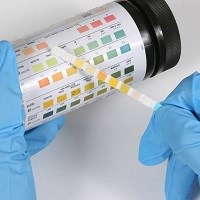NICE – the National Institute for Health and Care Excellence – has updated its guidance for diagnosing and managing UTIs in children.
The new recommendations give clear advice to GPs and healthcare professionals about how they can accurately test children’s urine for an infection.
This will help to give them a better indication of whether the child needs antibiotics or not. Therefore assisting in the fight against antibiotic resistance, which can be caused by the misuse of medicine.
A dipstick test offers a quick and painless way to check a child’s urine for signs that their body is fighting an infection.
NICE says children between the age of three months and three years should not be given antibiotics if their dipstick test is negative.
Children over the age of three years may need to be given antibiotics if their urine dipstick analysis shows mixed results and they have other obvious symptoms of a UTI (for example painful urination).
Children under three months of age who are suspected of having a UTI should not have a dipstick test. They should be referred to paediatric specialist care and their urine sent for urgent laboratory analysis.
Professor Gillian Leng, deputy chief executive and director of health and social care at NICE, said: “These new recommendations will support GPs and healthcare professionals in deciding whether or not to prescribe an antibiotic.
“We need to ensure medicines are only used when needed, or risk a future where they will not work at all.”
The updated guidance also gives a clear outline for when urine samples should be sent for further laboratory analysis. These circumstances include when a child has recurring UTIs and when their symptoms have not responded to treatment within 24-48hrs.
UTIs are bacterial infections that can affect the bladder, the kidneys and the tubes that connect them. They are very common in children with 3.7% of boys and 2% of girls estimated to have experienced a UTI by the age of one year.
Symptoms include blood in the urine and the feeling of needing to go to the toilet more often.
